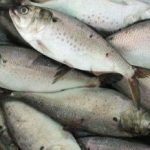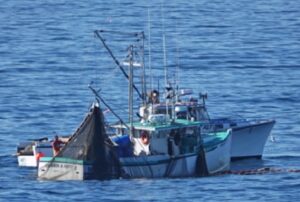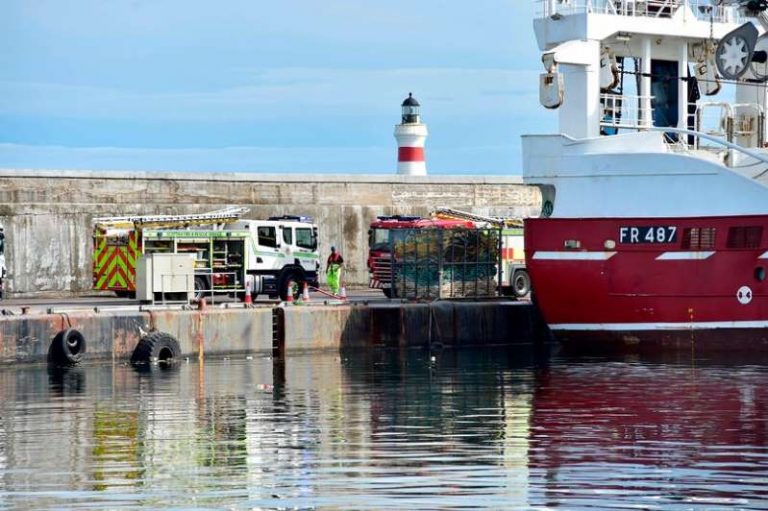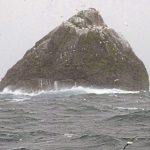Tag Archives: grey-seals
Predators take big bite out of declining Atlantic mackerel population
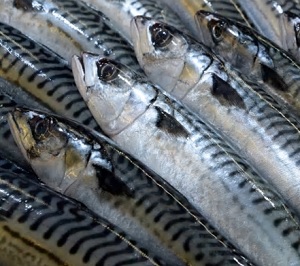 Predators ate at least twice as many Atlantic mackerel as commercial fishery landings in the decade leading up to Canada’s region-wide moratorium, according to new research by Canadian and American scientists. The study also found seals are a major predator, lending credence to what many fishermen have long claimed. The modelling study was published this month by the federal Fisheries Department and the Canadian Science Advisory Secretariat. The top predators were gannets, grey seals, dogfish and bluefin tuna. In the most conservative estimate, predators removed between 21,000 and 29,000 tonnes annually between 2012 and 2021 — at least two times greater than Canadian commercial landings reported as 11,000 tonnes per year. more, >>CLICK TO READ<< 12:26
Predators ate at least twice as many Atlantic mackerel as commercial fishery landings in the decade leading up to Canada’s region-wide moratorium, according to new research by Canadian and American scientists. The study also found seals are a major predator, lending credence to what many fishermen have long claimed. The modelling study was published this month by the federal Fisheries Department and the Canadian Science Advisory Secretariat. The top predators were gannets, grey seals, dogfish and bluefin tuna. In the most conservative estimate, predators removed between 21,000 and 29,000 tonnes annually between 2012 and 2021 — at least two times greater than Canadian commercial landings reported as 11,000 tonnes per year. more, >>CLICK TO READ<< 12:26
Catch-22 on the Baltic: The Twilight of Poland’s Coastal Fishermen
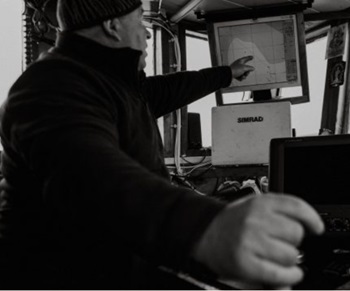 Antoni Struck looks like a casting director’s idea of a fisherman. He also looks very much unlike those members of the Association of Polish Coastal Fishermen who tend to wear a fancy watch and drive a nice set of wheels. In fact, when the Association meets in the local town hall, some of the attendees look less like fishermen and more like businessmen who happen to have a stake in fisheries. Struck sits through these meetings in his unbranded workwear and sturdy boots, arms folded stubbornly across his chest, looking as though he has just stepped off his boat and is in no mood to be pushed around. “A man can put up with a lot of things,” he is fond of saying. “But he needs to know just one thing: what it is for.” Photos, more, >>click to read<< 13:18
Antoni Struck looks like a casting director’s idea of a fisherman. He also looks very much unlike those members of the Association of Polish Coastal Fishermen who tend to wear a fancy watch and drive a nice set of wheels. In fact, when the Association meets in the local town hall, some of the attendees look less like fishermen and more like businessmen who happen to have a stake in fisheries. Struck sits through these meetings in his unbranded workwear and sturdy boots, arms folded stubbornly across his chest, looking as though he has just stepped off his boat and is in no mood to be pushed around. “A man can put up with a lot of things,” he is fond of saying. “But he needs to know just one thing: what it is for.” Photos, more, >>click to read<< 13:18
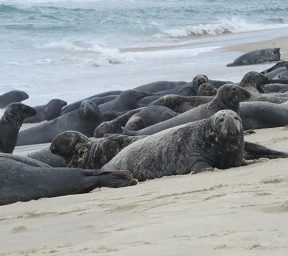
Grey seals eat into another fish population in the Gulf of St. Lawrence
Grey seals are eating into another fish species in the southern Gulf of St. Lawrence, driving a serious decline in the abundance of yellowtail flounder, according to a new report from Fisheries and Oceans Canada (DFO). Federal scientists assessed the flatfish species in the southern gulf over the past 25 years up to 2020 and projected the population to 2030. The results are stark. The number of yellowtail flounder six-years and older is believed to have declined by 95 per cent since the mid-1980s. There is a 100 per cent probability the population will remain in the critical zone where serious harm occurs whatever the level of commercial fishing, the report says. >click to read< 08:39

Seal summit slated for the fall in St. John’s
More research is needed on the impact of seals on dwindling east coast fish stocks, federal Fisheries Minister Joyce Murray said Thursday,,, Speaking outside a seafood processing plant, Murray drew applause when she said she knows “seals eat fish.” “So, that’s the reason we need to better understand the impact they are having on our fish stocks,” she said. The minister said that as a first step, her department will host a seal summit this fall. “That will be to broaden engagement on Atlantic seals and bring stakeholders together to discuss approaches for science, market development and management,” she said. >click to read< 12:36
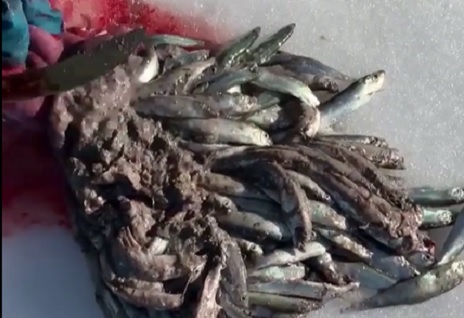
Wow. Just, Wow. A belly full of fish ramps up seal debate
If you have a weak stomach, the video might be difficult to watch. But for fish harvesters in Newfoundland and Labrador, the images of a seal stomach being cut open to reveal a gut full of small herring and Arctic cod is proof enough that seals are a factor in the slow recovery of cod stocks. Last week Dion Weir and a buddy hunted a few seals for personal use in Hall’s Bay, off the Baie Verte Peninsula. They were filled with small fish. “Up in these bays now they’re eating herring and Arctic cod,” Weir said. “Wherever the cod is, the seals are there.” Multiply that by 7.6 million seals,,, >click to read< 15:42
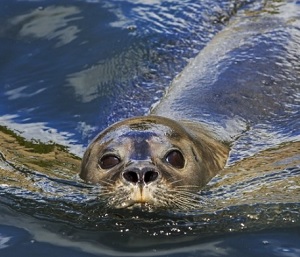
Kerry fishermen call for seal cull to protect fish stocks
Inshore fishermen in Dingle, Co Kerry are calling for an immediate cull of the local seal population, claiming the damage to fish stocks and nets is now “unsustainable”. Population numbers of grey seals, and the smaller common seal, have visibly increased in recent years with thousands of grey seals now taking up residence on the Tra Bán on the Great Blasket Island. >click to read< 10:23

Winter skate are dying in huge numbers, a new scientific paper points the finger at a big herd of seals
A “striking conservation success” in Atlantic Canada has turned into a “serious conservation problem” as rebounding grey seal herds threaten depleted bottom-feeding fish in the southern Gulf of St. Lawrence, according to a new research paper from Canadian and U.S. scientists. The focus is on the winter skate, a little-known shark relative with a flat body and a long tail. “It’s quite dire. The skate have declined by 98 per cent since the mid-80s,” said Doug Swain, a federal fisheries scientist based in Moncton, N.B. The paper concludes grey seals are the likely cause of an “unprecedented” winter skate annual adult mortality rate of between 65 and 70 per cent. >click to read<09:20

Cod mortality – Northern cod’s fate not the same as southern cousins
There are some fundamental differences between northern cod and their southern gulf cousins that could save the former from extinction, says Dalhousie University professor Jeff Hutchings. That will be a relief to anybody who saw newly published research that predicts Atlantic cod in the Gulf of St. Lawrence could be extinct by 2050.,,, There are a couple of fundamental differences in the two cod populations, Hutchings said, that make the situations difficult to compare. For one, southern gulf cod are being eaten by grey seals, while northern cod are affected by harp seals — a much smaller animal. >click to read<17:50

Southern Gulf of St. Lawrence cod could be extinct by mid-century: report
There is a high probability that Atlantic cod will be locally extinct in the southern Gulf of St. Lawrence by mid-century — even with no commercial fishing, according to a new report. The paper, published in the Canadian Journal of Fisheries and Aquatic Sciences, says the death rate now stands at 50 per cent for adult Gulf cod five years and older. The likely culprit? Grey seals. “That high a natural mortality is not sustainable,” says Doug Swain, a federal Fisheries Department scientist who co-authored the study. >click to read<10:12
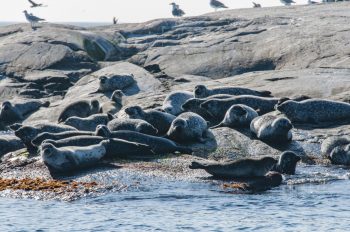
Increasing seal population will not harm largest fish stocks in the Baltic
It has long been debated whether the seal predation of fish play a major role in the fish decline in the Baltic Sea compared to human fishing. The debate escalated worldwide since conservation efforts to protect seals and fish-eating birds resulted in increased number of them. A new study taking into account human pressures on the environment, shows that the seals are not the main problem on commercial fish stocks in the open water of the Baltic Sea. “We currently have 30 000 grey seals in the Baltic Proper, but we can even have more than 100 000 seals and it will still not affect the amount of cod negatively as much as climate change, nutrient load and fisheries. (scratches head) >click to read<07:26
Grey Seals becoming a growing headache for fishermen in Danish waters
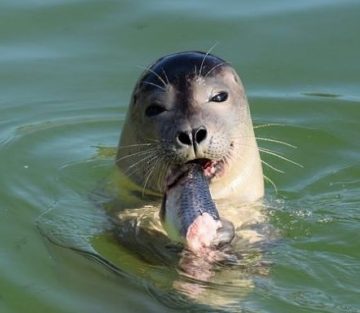 Seal populations in the Wadden Sea are growing fast and their appetite for fish is becoming an increasing problem, especially for gill net fishermen. The number of grey seals has reached a record high this year, with 5,445 adults being counted in the Wadden Sea – an increase of 10 percent on the numbers from last year. Seals have been depreciating the sustainable coast fisheries that green organisations and politicians are keen to encourage. They rip up the nets and eat the parts of the fish that they like best. click here to read the story 11:22
Seal populations in the Wadden Sea are growing fast and their appetite for fish is becoming an increasing problem, especially for gill net fishermen. The number of grey seals has reached a record high this year, with 5,445 adults being counted in the Wadden Sea – an increase of 10 percent on the numbers from last year. Seals have been depreciating the sustainable coast fisheries that green organisations and politicians are keen to encourage. They rip up the nets and eat the parts of the fish that they like best. click here to read the story 11:22
New money for Quebec seal hunt – UPEI researcher to study commercial potential of grey seals in Magdalen Islands
 After rejecting a scientific study that involved culling 1,200 grey seals from the Brion Island nature reserve in the Magdalen Islands, the province is helping to finance similar research nearby. The $72,904 in funding will allow a University of Prince Edward Island researcher to study an unspecified number of grey seals harvested on Corps Mort, or Dead Man’s Island, a few kilometres west of the Magdalen Islands archipelago. Wildlife veterinarian and pathologist Pierre-Yves Daoust is pleased the Quebec government decided to support an alternative proposal. Some opponents of the seal hunt are appalled by the decision. “We are deeply disappointed to see this so-called study funded,” said (panhandler) Rebecca Aldworth, executive director of Humane Society International – Canada, calling the study a make-work project for the commercial sealing industry. Read the story here 19:28
After rejecting a scientific study that involved culling 1,200 grey seals from the Brion Island nature reserve in the Magdalen Islands, the province is helping to finance similar research nearby. The $72,904 in funding will allow a University of Prince Edward Island researcher to study an unspecified number of grey seals harvested on Corps Mort, or Dead Man’s Island, a few kilometres west of the Magdalen Islands archipelago. Wildlife veterinarian and pathologist Pierre-Yves Daoust is pleased the Quebec government decided to support an alternative proposal. Some opponents of the seal hunt are appalled by the decision. “We are deeply disappointed to see this so-called study funded,” said (panhandler) Rebecca Aldworth, executive director of Humane Society International – Canada, calling the study a make-work project for the commercial sealing industry. Read the story here 19:28
Atlantic cod, white hake recommended for endangered species list
 The low number of white hake and Atlantic cod has led to the recommendation they be given endangered status by the Committee on the Status of Endangered Wildlife in Canada. Nearly half a million grey seals in the Northumberland Strait that feed on the fish are the main cause behind the recommendation, according to the committee. It’s also a combination of two other factors, said Hugues Benoit, head of the marines fish section at Fisheries and Oceans Canada. “The available information we have now it does suggest that the combined effect of the low level of abundance of these fish species and high level of abundance of grey seals could be the cause of elevated natural mortality,” he said. Read the rest here 17:03
The low number of white hake and Atlantic cod has led to the recommendation they be given endangered status by the Committee on the Status of Endangered Wildlife in Canada. Nearly half a million grey seals in the Northumberland Strait that feed on the fish are the main cause behind the recommendation, according to the committee. It’s also a combination of two other factors, said Hugues Benoit, head of the marines fish section at Fisheries and Oceans Canada. “The available information we have now it does suggest that the combined effect of the low level of abundance of these fish species and high level of abundance of grey seals could be the cause of elevated natural mortality,” he said. Read the rest here 17:03
Seals threaten Scottish cod stock recovery
PREDATORY seals are constraining the recovery of cod stocks in Scottish west coast waters, research by the  suggests. The study found that, although fishing has now halved, predation by seals has rapidly increased to compensate, eating up more than 40 per cent of the total stock. Seals have, historically, been anecdotally blamed for the reduction of Atlantic cod stocks. Grey seals are believed to consume nearly 7,000 tonnes of cod each year off the west of Scotland, where landed catches now amount to only a few hundred tonnes. Read the rest here 20:40
suggests. The study found that, although fishing has now halved, predation by seals has rapidly increased to compensate, eating up more than 40 per cent of the total stock. Seals have, historically, been anecdotally blamed for the reduction of Atlantic cod stocks. Grey seals are believed to consume nearly 7,000 tonnes of cod each year off the west of Scotland, where landed catches now amount to only a few hundred tonnes. Read the rest here 20:40
Killer grey seals could attack humans say scientists
 A VIDEO showing a grey seal biting and eating a harbour porpoise it has just killed has sparked fears that seals could attack humans. Seals have a reputation for being playful and friendly but the footage, off the Welsh coastline, displays another side to their character, reported the South Wales Evening Post yesterday. Filmed by a local wildlife watching operator in Pembrokeshire, the video shows an adult male grey seal eating its prey. Read the rest here 13:00
A VIDEO showing a grey seal biting and eating a harbour porpoise it has just killed has sparked fears that seals could attack humans. Seals have a reputation for being playful and friendly but the footage, off the Welsh coastline, displays another side to their character, reported the South Wales Evening Post yesterday. Filmed by a local wildlife watching operator in Pembrokeshire, the video shows an adult male grey seal eating its prey. Read the rest here 13:00
Seals gobble half a million fish – commercial fisheries report almost 500K in losses
 Professional fishermen in Finland are up in arms about damages to their catch and equipment from grey seals. Recent figures from the Finnish Game and Fisheries Research Institute estimate that the market value of fish lost to seals is 466,000 euros. (578,820.87 US Dollars) Read the rest here 09:00
Professional fishermen in Finland are up in arms about damages to their catch and equipment from grey seals. Recent figures from the Finnish Game and Fisheries Research Institute estimate that the market value of fish lost to seals is 466,000 euros. (578,820.87 US Dollars) Read the rest here 09:00
The flight of the grey seal and the plight of science
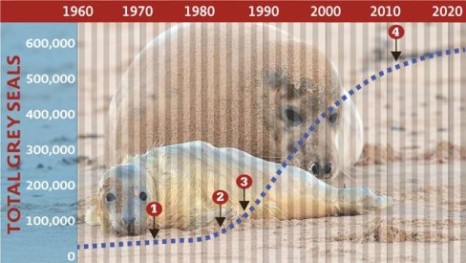 Some will argue that grey seals contribute to marine productivity through the recycling of their feces. Converting fish to seal feces is not an economical venture, having a downside: the very avenue by which eggs of seal-worm are spread, further devaluing commercial species. continued @ Chronicle Herald
Some will argue that grey seals contribute to marine productivity through the recycling of their feces. Converting fish to seal feces is not an economical venture, having a downside: the very avenue by which eggs of seal-worm are spread, further devaluing commercial species. continued @ Chronicle Herald
Grey seals blamed for lobster population boom
 YARMOUTH — Grey seals may ultimately be to blame for — get this now — a population boom in lobster. So said an industry source Thursday. His comments echoed recent scientific findings. The six-month lobster season in southwestern Nova Scotia will close in another three weeks. Every indication shows it will be one of the best ever. And the glut of lobster may be due to the fact the lobsters’ predators — cod, pollock and cusk — have been nearly devastated by hungry grey seals. continued
YARMOUTH — Grey seals may ultimately be to blame for — get this now — a population boom in lobster. So said an industry source Thursday. His comments echoed recent scientific findings. The six-month lobster season in southwestern Nova Scotia will close in another three weeks. Every indication shows it will be one of the best ever. And the glut of lobster may be due to the fact the lobsters’ predators — cod, pollock and cusk — have been nearly devastated by hungry grey seals. continued
How about some common sense Dr. Hutchings? New data from DFO suggests seals eat twice as many cod.
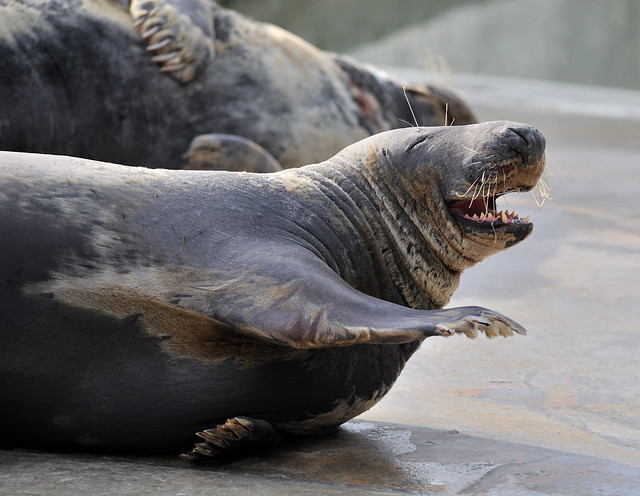 INGONISH — No one is sure yet whether grey seals are continuing to threaten recovery of the cod stocks in the southern Gulf of St. Lawrence, but the seals are there and the fish are not. And new data strongly suggests seals aren’t helping the cod. Seals, eating the softer belly meat and leaving the heads, could be consuming much more cod than figures indicate. Previous data suggested a male grey seal’s diet was up to 24 per cent adult cod. Hamill’s new data suggests adult cod could be up to 60 per cent of the male grey seal’s winter diet. That’s more than double the number that was available to the Senate committee when it recommended a cull. continued
INGONISH — No one is sure yet whether grey seals are continuing to threaten recovery of the cod stocks in the southern Gulf of St. Lawrence, but the seals are there and the fish are not. And new data strongly suggests seals aren’t helping the cod. Seals, eating the softer belly meat and leaving the heads, could be consuming much more cod than figures indicate. Previous data suggested a male grey seal’s diet was up to 24 per cent adult cod. Hamill’s new data suggests adult cod could be up to 60 per cent of the male grey seal’s winter diet. That’s more than double the number that was available to the Senate committee when it recommended a cull. continued



































